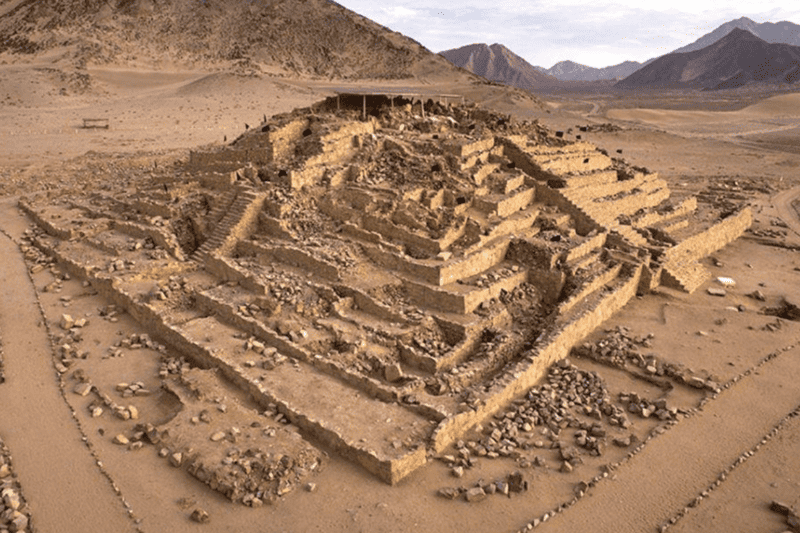Step into the fascinating world of astronomy and discover how the echoes of ancient civilizations still resonate in the cosmos today. They gifted humanity with a profound understanding of the cosmos, a legacy that still influences modern astronomy. Millennia ago, these ingenious cultures meticulously tracked celestial movements, devised intricate calendars, and imbued the stars with spiritual significance. Today, their astronomical heritage serves as the cornerstone for our exploration of the universe, guiding astronomers in deciphering the mysteries of the night sky and shaping our understanding of the cosmos. Join us on a journey through time as we unravel the enduring impact of ancient cultures on the science of astronomy.
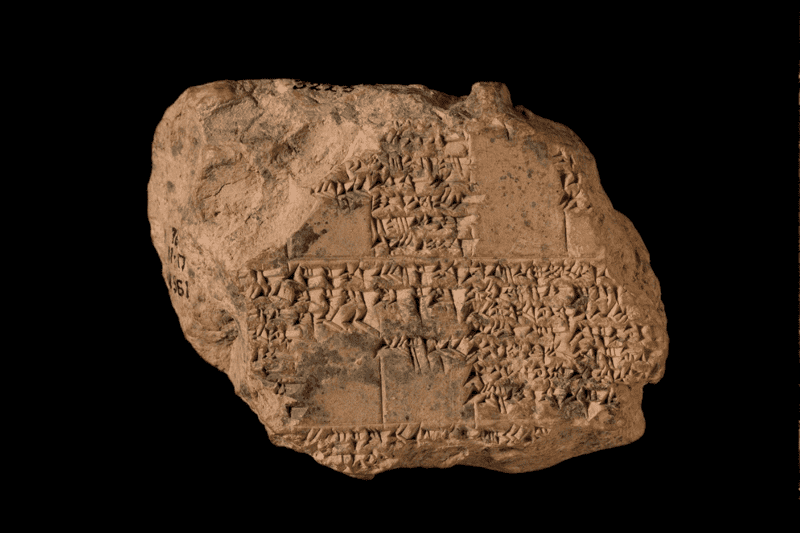
The Sumerians and Babylonians of Mesopotamia
In the ancient cradle of civilization, Mesopotamia, the Sumerians emerged as astronomy pioneers around 3500 BCE. These early stargazers, nestled in the fertile lands of modern-day Iraq, were among the first to turn their eyes to the heavens. Tracking celestial events with awe and curiosity, the Sumerians meticulously observed the night sky and birthed an incipient form of astronomy. Their enduring legacy lies in the creation of a lunar calendar, a testament to their profound understanding of the Moon’s cyclical journey across the sky.
Following in the astronomical footsteps of the Sumerians, the Babylonians, Mesopotamia’s successors, elevated the study of the stars to new heights. Making systematic observations of the sky, these ancient skywatchers honed their craft, unveiling the mysteries of the cosmos. With a stroke of intellectual brilliance, the Babylonians crafted a sophisticated calendar that not only reflected their agricultural pursuits but also enabled them to predict astronomical events. Lunar eclipses, among the most captivating cosmic displays, succumbed to the predictive prowess of Babylonian astronomers. Through their meticulous observations and innovative calendar systems, the Babylonians laid the groundwork for the mathematical precision that would define future astronomical pursuits.
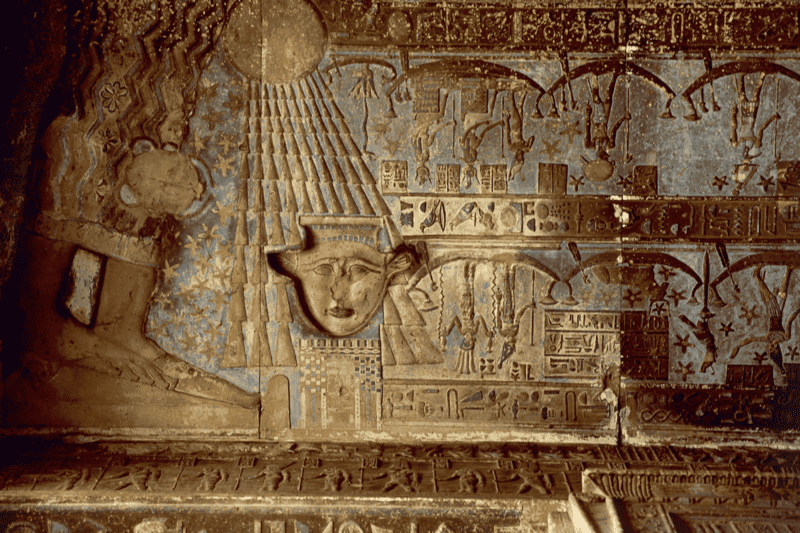
Egyptians of Mesopotamia
In the sun-kissed lands of Egypt, the ancient Egyptians, with a fascination steeped in religious mystique and agricultural knowledge, left a mark on the history of astronomy. Their monumental pyramids and temples weren’t just architectural marvels but celestial compasses meticulously aligned to the heavens. The ancient Egyptians were architects of the awe-inspiring pyramids and temples and possessed a profound interest in astronomy that transcended the boundaries of earthly realms. Not merely structures of grandiosity, these architectural marvels were meticulously aligned with astronomical precision, serving as celestial compasses pointing toward the heavens.
At the heart of the Egyptian cosmic odyssey was their ingenious 365-day calendar, intricately woven into the annual rise of Sirius, the brightest star adorning the night sky. This astrological dance wasn’t merely a mesmerizing spectacle; it held tangible significance for the Egyptians. The predictable rise of Sirius heralded the impending inundation of the Nile, a life-giving event that dictated the success of their agricultural endeavors.Through their astute observations and celestial calendars, the Egyptians not only navigated the cyclical rhythms of nature but also left an indelible mark on the evolving narrative of human understanding of the cosmos.
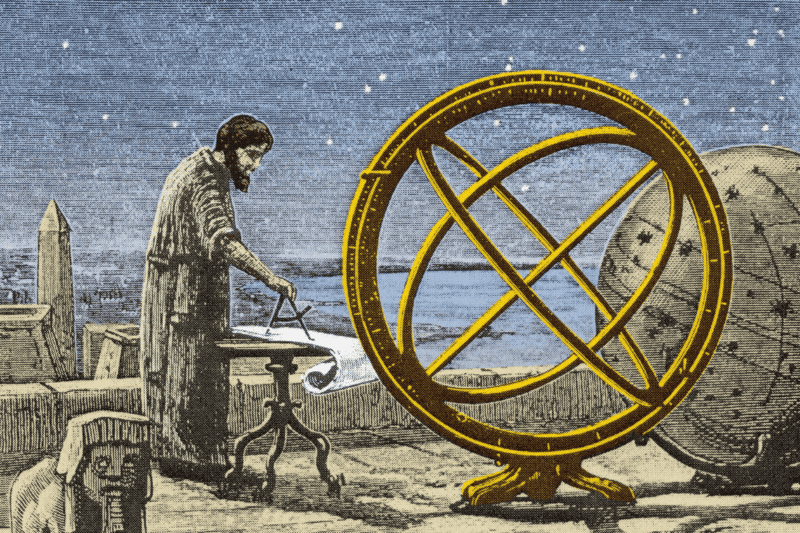
Ancient Greek Astronomy
Another influential culture is that of ancient Greece, where the astrological curtain unfolded to reveal profound insights into the cosmos. In the bustling intellectual landscape of 600 BCE, Thales of Miletus emerged as a pioneer, ushering in a new era of systematic astronomical inquiry. His curiosity about the heavens laid the groundwork for a legacy that would echo through the ages. The torch was passed to luminaries like Pythagoras and his disciples, who delved into celestial spheres and toyed with the revolutionary concept of a heliocentric universe. Greek astronomers, with their inquisitive minds, sought not only to fathom the motions of the heavens but also to weave a narrative that would shape humanity’s cosmic understanding.
Hipparchus was a cartographer extraordinaire, he took center stage by crafting the first comprehensive star catalog, an atlas that painted the night sky with unparalleled precision. His mathematical prowess extended to trigonometry, contributing crucial tools for later astronomers. Meanwhile, Ptolemy, with a captivating blend of observation and theory, proposed the geocentric model, envisioning Earth at the cosmos’ heart. Despite its eventual debunking, Ptolemy’s model remained the astronomical blueprint for centuries. The Greek legacy in astronomy, characterized by a synergy of mathematical rigor and empirical observation, became a cornerstone for future scholars.
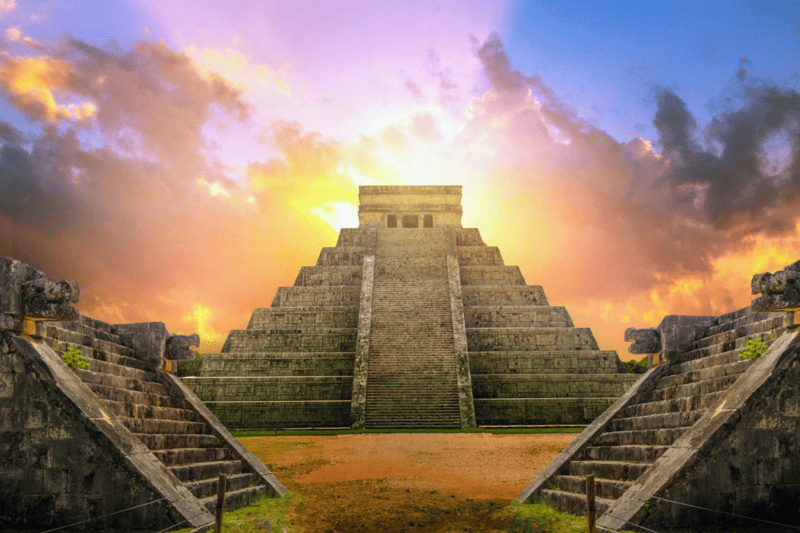
Mayan Astronomy
In the heart of Mesoamerica, the ancient Maya civilization emerges as a beacon of astronomical prowess, leaving an indelible mark on the study of the cosmos. Flourishing between 2000 BCE and 1500 CE, the Maya not only built awe-inspiring pyramids but also crafted a sophisticated system of timekeeping that showcased their profound understanding of astrological rhythms. At the core of their achievements was the development of a dual-calendar system. The 260-day ritual calendar, known as the Tzolk’in, and the 365-day solar calendar, called the Haab’, interwove seamlessly, creating a more intricate and accurate measurement of time. This calendrical mastery allowed the Maya to synchronize cosmic events with their religious and agricultural practices, attuning their lives to the cosmic ballet above.
Mayan astronomers, with an acute awareness of the night sky, honed their observational skills to predict celestial phenomena with remarkable precision. Eclipses became essential for the Maya, and their astronomers could forecast these events, demonstrating an understanding of the intricate dance between the Earth, Moon, and Sun. Additionally, the movements of Venus, a planet associated with their deity Kukulkan, were meticulously recorded. The Maya not only gazed at the heavens for spiritual insights but also integrated their astronomical knowledge into practical aspects of daily life. This cosmic literacy played a pivotal role in shaping their agricultural practices and societal rituals.
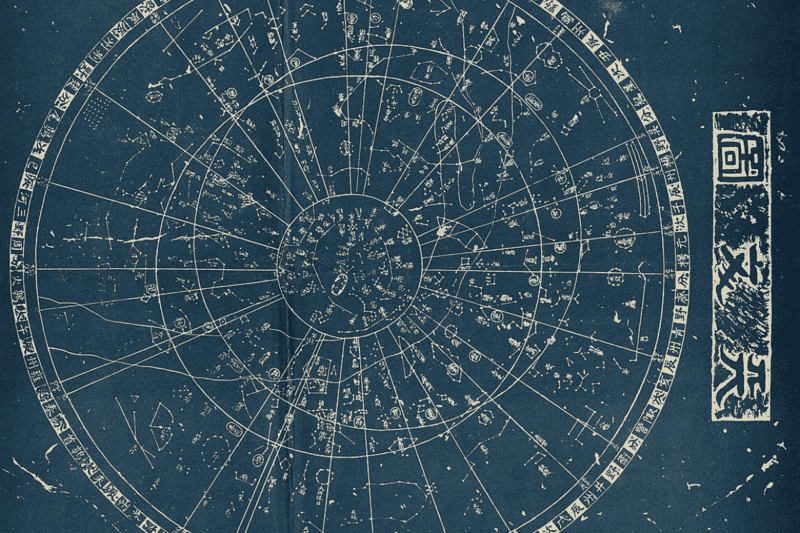
Ancient Chinese Astronomy
Chinese astronomers were masters in the world of sky-gazing history. With a lineage tracing back thousands of years, these ancient sky-watchers crafted an astronomical legacy that rivaled the best in the world. In 185 AD, their keen observations bore witness to one of the earliest recorded supernovae, showcasing an early understanding of stellar phenomena. Armed with dedication and meticulous record-keeping, the Chinese not only tracked the mesmerizing dance of comets but also meticulously documented the positions of stars, contributing significantly to a celestial narrative that echoes through the ages.
The intricate Chinese astronomical tradition was not merely a spectacle for the eyes; it served practical purposes deeply intertwined with their cultural and agricultural practices. Beyond the mesmerizing beauty of the night sky, these ancient astronomers wielded their knowledge for pragmatic applications. The Chinese developed accurate and detailed star maps, aiding navigation and aligning with their practical needs, such as agriculture and timekeeping. The famed Dunhuang Star Chart, dating back to the Tang Dynasty (7th century), stands as a testament to their precision. Additionally, their calendar systems, harmonizing lunar and solar cycles, guided agricultural activities, demonstrating a fusion of cosmic wonder and earthly utility. This integration of astronomy into the fabric of daily life not only enhanced their practical pursuits but also fostered a holistic understanding of the cosmos, leaving an enduring legacy that paved the way for future astronomical endeavors.
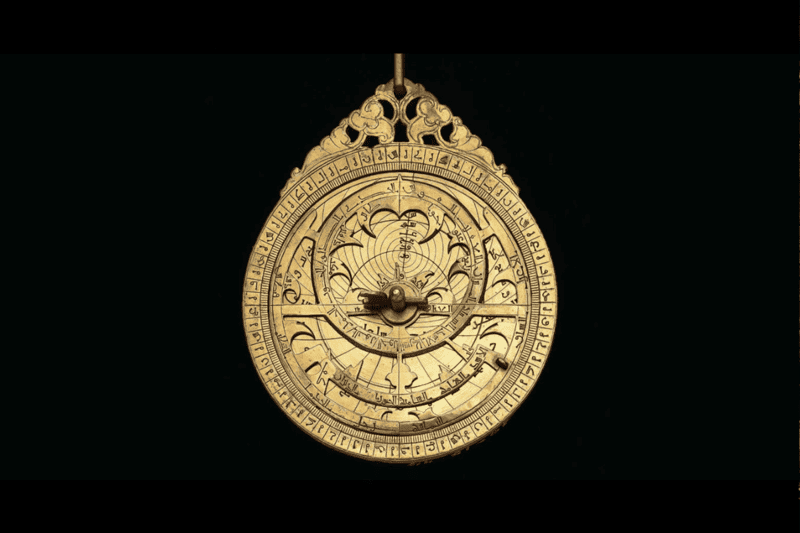
Medieval Islamic Astronomy
For ancient cultures, astronomy wasn’t just about science; it was a way to uncover the secrets of the cosmos. Among these are the Islamic scholars of the Golden Age (8th to 14th centuries) standing as beacons of enlightenment. Al-Razi, Al-Battani, and Al-Haytham, the architects of Islamic astronomy, propelled the field to new heights. They honed observational techniques, meticulously charting the heavens, while refining Ptolemaic models that described the Earth-centered universe. Beyond groundbreaking discoveries, the Islamic astronomers played a pivotal role in preserving and translating the wisdom of ancient Greece and Rome.
In the radiant glow of Islamic astronomy, a cosmic bridge emerged, connecting time and cultures. As Europe slumbered in the Dark Ages, the Islamic world became a repository of astronomical knowledge. The luminaries of the time safeguarded and translated Greek and Roman texts, acting as custodians of intellectual treasures that would later spark the Renaissance in Europe. This transmission of wisdom not only preserved the astronomical heritage but also catalyzed a resurgence of interest in the skies. The astrolabe, an ingenious device developed during this era, became a guiding light for navigators and astronomers alike, showcasing the practical applications of Islamic astronomical advancements.
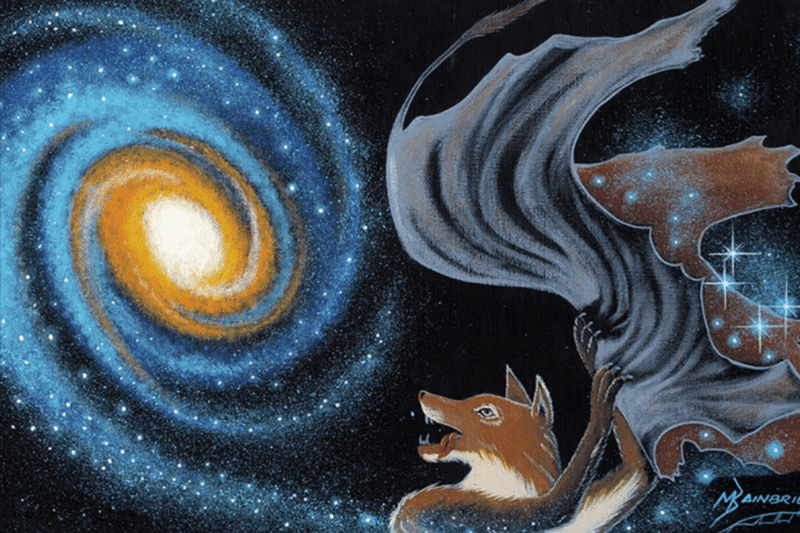
The Hopi and Navajo Tribes of North America
The Hopi and Navajo tribes stand out as profound storytellers, weaving their cultures with intricate astronomical knowledge. These native communities possessed a remarkable understanding of cosmic events, integrating them seamlessly into the fabric of their lives. For the Hopi, whose name translates to “peaceful ones,” the cosmos was a repository of sacred knowledge. Their intricate calendar system, intricately intertwined with lunar and solar cycles, guided agricultural practices and ritualistic ceremonies. The night sky above informed crucial moments, from planting to harvest, forging an unbreakable link between the earthly and the ethereal. Similarly, the Navajo, with their rich tradition of storytelling, aligned their narratives with the movements of the stars.
The night sky became a stellar stage for tales passed down through generations, shaping not only their mythos but also influencing agricultural decisions and migration patterns. The stars were not distant entities but rather integral players in the unfolding drama of daily life. These indigenous cultures, often overlooked in mainstream narratives, were cosmic choreographers, utilizing the heavens as both guide and muse. Their astronomical prowess went beyond mere observation; it seeped into every facet of their existence. Through intricate calendars, agricultural practices, and mythologies, the Hopi and Navajo demonstrated a profound understanding of the cosmos.
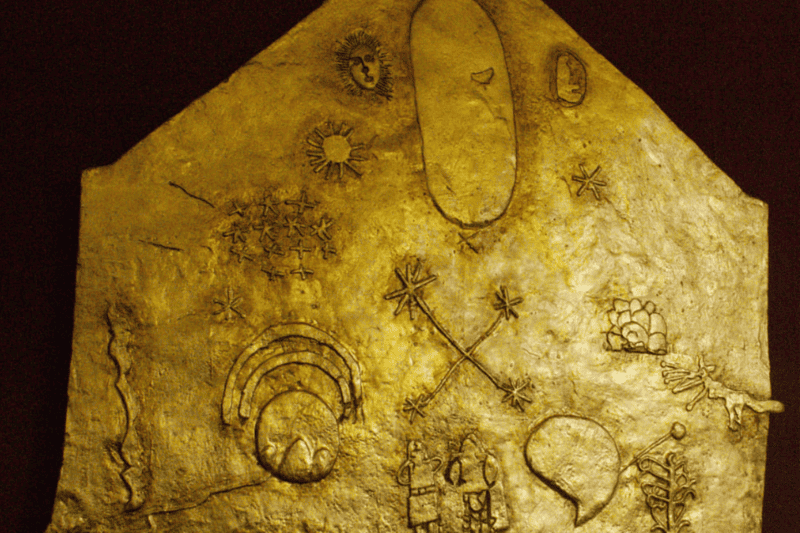
Inca People of South America
Venturing into the mystical realm of Pre-Columbian Andean astronomy unveils the ingenuity of the Inca civilization nestled amidst the breathtaking peaks of the Andes in South America. Renowned for their monumental architectural prowess, the Incas left an undeniable mark on history, with structures such as Machu Picchu. The Incas displayed a profound understanding of the cosmos, intricately aligning their architectural marvels with the movements of cosmic bodies. Machu Picchu, nestled high in the mountains, is a prime example, with specific structures pointing towards solstices and other significant astronomical events. Their cosmic connection extended beyond the tangible, permeating their daily lives through a calendar system intricately woven with the rhythmic dance of the Sun and the Moon.
Astronomy, for the Incas, wasn’t just a theoretical pursuit; it was interwoven with the fabric of their society. The calendar system they crafted, anchored in celestial cycles, played a pivotal role in agricultural planning and religious ceremonies. By observing the heavens, the Incas developed an agricultural calendar that guided them in sync with the seasons, ensuring optimal crop yields. Moreover, their religious practices were deeply intertwined with planetary events, with certain structures aligning with celestial occurrences deemed sacred.
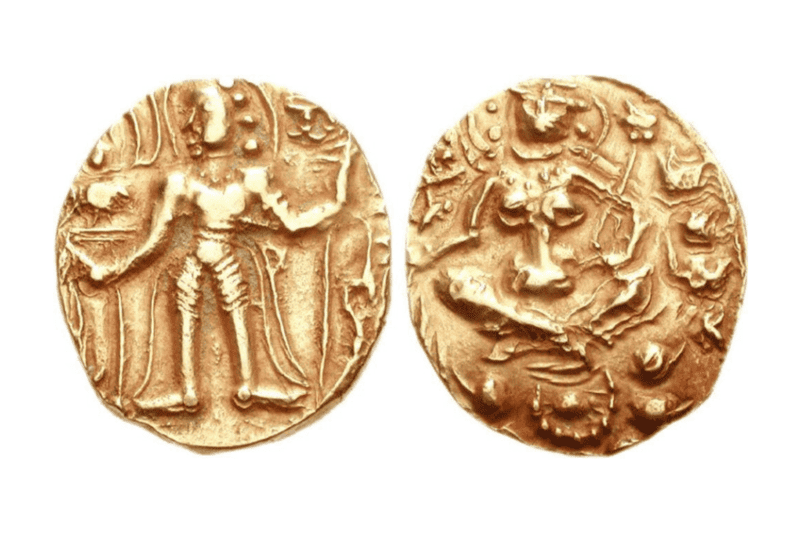
Ancient Indian Astronomy
Among the ancient cultures influencing our comprehension of the cosmos, Indian astronomy contributes richly colored threads, imbuing the cosmic canvas with profound depth. Dating back to the 5th century CE, the mathematical brilliance of Aryabhata sparkles in his magnum opus, the “Aryabhatiya.” Here, he boldly presented a heliocentric model of the solar system, challenging prevailing geocentric beliefs. Aryabhata’s astronomical legacy didn’t stop there; his work laid the groundwork for future Indian astronomers to explore the intricacies of the universe.
In the 7th century CE, the mathematical luminary Brahmagupta took the baton, contributing significantly to mathematical astronomy. His masterpiece, the “Brahmasphutasiddhanta,” not only delved into arithmetic and algebra but also provided essential rules for computing the positions of planets. This was a pivotal moment in the fusion of mathematics and astronomy, as Brahmagupta’s equations became indispensable tools for predicting planetary events. In the vast tapestry of Indian astronomy, these luminaries weren’t merely stargazers; they were architects of a cosmic symphony, harmonizing mathematical precision with observations of the night sky. Their contributions provided a celestial roadmap for navigators, astrologers, and scholars alike, influencing not just the Indian subcontinent but echoing across borders and centuries.

Polynesian Astronomers
Long ago in the Pacific Islands, the Polynesians crafted an extraordinary relationship between the cosmic realm and their navigational prowess. This ancient seafaring culture, whose navigators traversed the expansive Pacific Ocean, ingeniously developed sophisticated techniques for heavenly navigation. With an astute understanding of the positions of stars, the Sun, the Moon, and other celestial bodies, the Polynesians unlocked the secrets of the night sky to guide them across the open waters. Their navigational prowess wasn’t merely a feat of survival; it was a testament to the harmonious integration of astronomy into their daily lives and exploration.
The Polynesians utilized their astronomical knowledge for precise navigation, seamlessly charting courses across the vastness of the Pacific. Stars like the Southern Cross and the Pleiades served as cosmic travelers, guiding them on long and daring voyages between islands. This utilization of the heavens for navigation not only facilitated exploration and trade but also fostered a profound connection between the Polynesians and the cosmos. The intricate movement of cosmic bodies became a navigational tool, shaping the Polynesian seafaring culture and influencing their folklore.
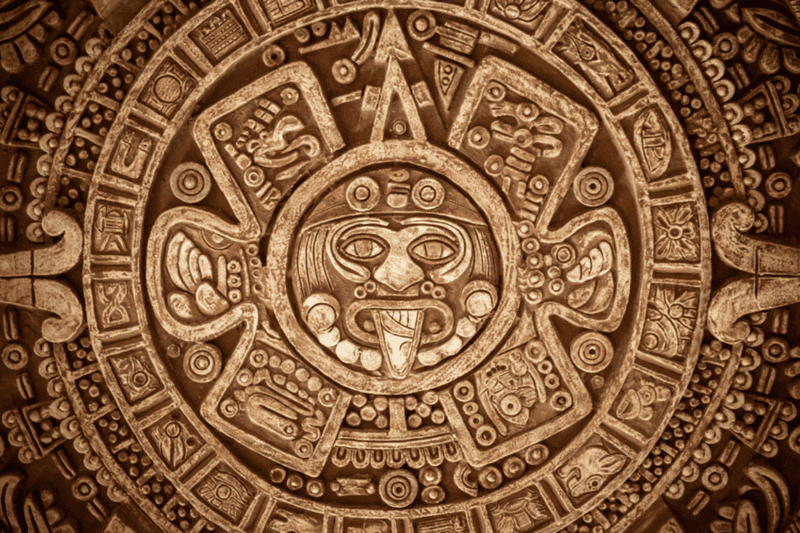
Aztec Astronomy
The Aztecs of Mesoamerica stand as superb navigators and architects of time. Renowned for their intricate understanding of the cosmos, the Aztecs crafted a sophisticated calendar system that seamlessly blended the spiritual and the solar. At the heart of their culture lays a 260-day ritual calendar, intertwined with an 18-month solar calendar, reflecting the dual strands of their cultural fabric. This intricate calendar not only dictated the rhythms of their religious ceremonies but also played a crucial role in agricultural planning, a testament to the Aztecs’ holistic approach to astronomy.
The Templo Mayor in Tenochtitlán stands as an enduring testament to the Aztecs’ mastery of astrological alignments. This monumental structure, the spiritual epicenter of their civilization, was strategically constructed to harmonize with the movements of the stars and cosmic bodies. The Aztecs, with a keen eye turned toward the heavens, integrated their cosmic insights into the very foundations of their architectural marvels. The Templo Mayor’s alignment with celestial events showcased a profound connection between the earthly and the ethereal, demonstrating the Aztecs’ belief in the intimate role of the heavenly realm with the affairs of daily life.
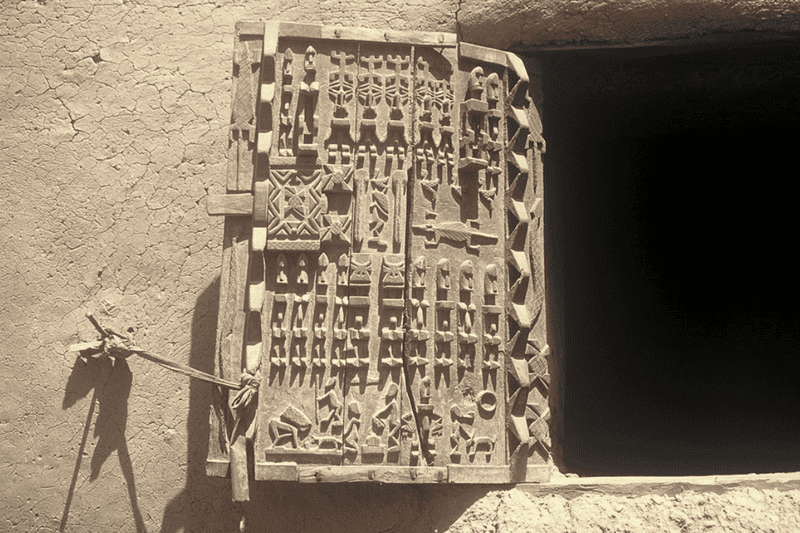
The Dogon People of Mali
The ancient cultures across Africa embroidered their unique cultural narratives by weaving a profound understanding of the cosmos into the fabric of their societies. Among these, the Dogon people of Mali stand out for their intricate knowledge of Sirius, the brightest star in the night sky. The Dogon’s heavenly expertise extends beyond mere stargazing; they possess a remarkable understanding of Sirius B, a companion star to Sirius that remains invisible to the naked eye. Their oral tradition, passed down through generations, recounts details about Sirius B’s characteristics and orbit, knowledge that predates modern telescopic observations. This cosmic awareness is not merely an intellectual pursuit for the Dogon; it holds cultural and spiritual significance, intricately woven into their cosmology and religious practices.
The Dogon’s heavenly insights highlight the symbiotic relationship between astronomy and cultural identity, where the night sky becomes a theater for narratives and beliefs. Their knowledge of Sirius, along with other cosmic bodies, serves practical purposes in agricultural and calendrical contexts. The timing of planting and harvesting aligns with celestial events, demonstrating a harmonious fusion of astronomy and agriculture. The Dogon’s impact on astronomy extends beyond the confines of their community; their unique astronomical insights have sparked interest and dialogue among modern astronomers and anthropologists. The influence of ancient wisdom and contemporary scientific inquiry sheds light on the enduring influence of these cultures, emphasizing that the stories etched into the night sky continue to resonate across the tapestry of time.
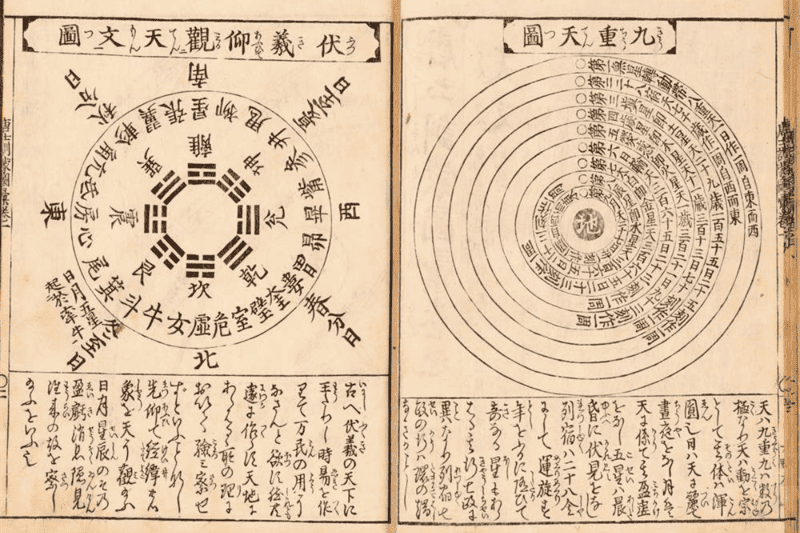
Ancient Japanese Astronomy
Japan is a captivating culture with its profound connection between astronomy and Shinto beliefs. The cosmic knowledge of Japan’s ancient skies was meticulously observed by astronomers who erected observatories and meticulously recorded celestial events. Rooted in the intricate web of Shintoism, the indigenous spirituality of Japan, these pursuits were not mere scientific endeavors but were deeply intertwined with cultural, religious, and agricultural practices. The Japanese people’s fascination with the heavens found expression in their innovative calendar system, intricately interwoven with the lunar and solar cycles.
This calendrical precision wasn’t a mere reflection of astronomical prowess; it was a testament to the symbiotic relationship between the planetary bodies and the terrestrial life of ancient Japan. The skies were not just a canvas of stars; they were a divine script guiding the rhythm for daily life in Japan. Observatories dotted the landscape, attesting to the meticulous observations of the moon, sun, and stars, providing a symphony that dictated the timing of agricultural activities and religious rituals. In shaping their calendar, the Japanese not only recorded astronomical events but also encoded the essence of their cultural identity and spiritual beliefs. The fusion of astronomy and spirituality in ancient Japan established the groundwork for a distinctive cosmological perspective, imprinting itself deeply onto the cultural identity of the era and shaping the customs of the future.
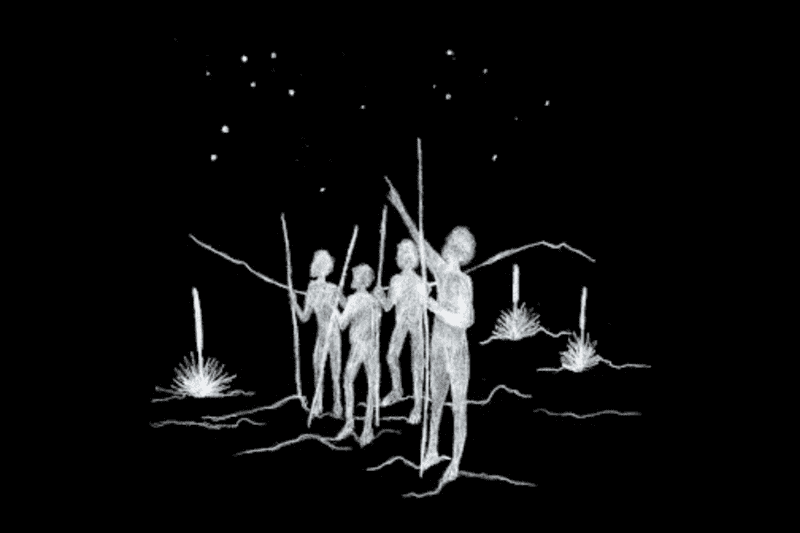
Aboriginal People of Australia
Among the mass of ancient cultures linked to the cosmos, the Aboriginal peoples of Australia shine with a distinct tale woven into their cultural fabric. Rooted in a rich oral tradition, their astronomical knowledge was interwoven with captivating stories that guided their lives and shaped their understanding of the universe. For these indigenous communities, the night sky wasn’t just a canvas of twinkling lights; it was a cosmic road map, a guide for navigation across the vast Australian landscape. The positions of stars and the Moon served as their cosmic compass, aiding in the intricate dance of seasonal changes and informing crucial decisions related to hunting, gathering, and cultural ceremonies. The Aboriginal peoples’ profound connection with the celestial realm not only facilitated practical navigation but also fostered a spiritual harmony with the cosmos.
In ancient Australian lore, the Milky Way is perceived as a heavenly river, with the bright patches in Sagittarius symbolizing the spirits of the creator spirit Baiame’s two sons, according to the Euahlayi people. Similarly, the Yolngu people of Northern Australia decipher the mechanics of tides through their ancestral wisdom. They attribute the ebb and flow to the moon’s passage through the ocean, causing the water level to fluctuate. While this perspective may diverge from modern scientific explanations, it proves pragmatic, enabling elders to forecast tides accurately. These indigenous insights offer a fascinating glimpse into generations of Aboriginal Australians’ quest to comprehend the cosmos.
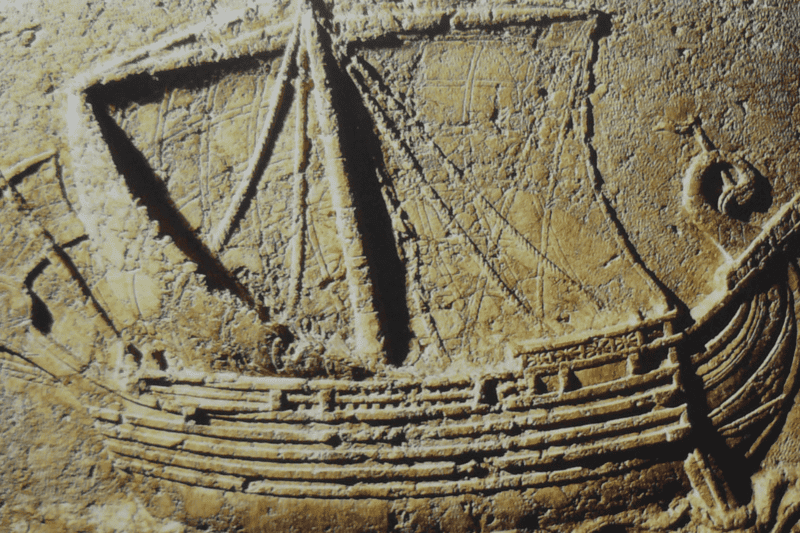
Phoenician Astronomy
In the history of ancient seafaring, the Phoenicians are a maritime civilization whose prowess extended beyond the waves and into the vastness of the night sky. Renowned for their navigational excellence, the Phoenicians, though leaving limited traces of formal astronomical studies, undoubtedly wielded a profound understanding of navigation. Their legendary seafaring expeditions across the Mediterranean and beyond were likely guided by a practical familiarity with the stars and celestial bodies. This implicit knowledge, essential for steering through the open waters, shows the critical role astronomy played in the daily lives of the Phoenician sailors. The lack of direct evidence shouldn’t diminish their astronomy legacy; instead, it highlights the pragmatic nature of their astronomical pursuits, serving a utilitarian purpose in the uncharted waters of the ancient world.
The Phoenicians stand as silent astrological navigators, using the night sky as a cosmic compass for maritime exploration. Their influence extends beyond the absence of formal records, illustrating that astronomy, for the Phoenicians, was a means to conquer the unknown, ensuring successful voyages and trade routes across the Mediterranean. The practical application of night sky navigation by the Phoenicians not only advanced their seafaring endeavors but also contributed to the broader narrative of ancient astronomy. These ancient sailors inadvertently enriched humanity’s knowledge of the night sky, imprinting a lasting legacy on the ongoing collection of astronomy, which transcended civilizations and endured through centuries.
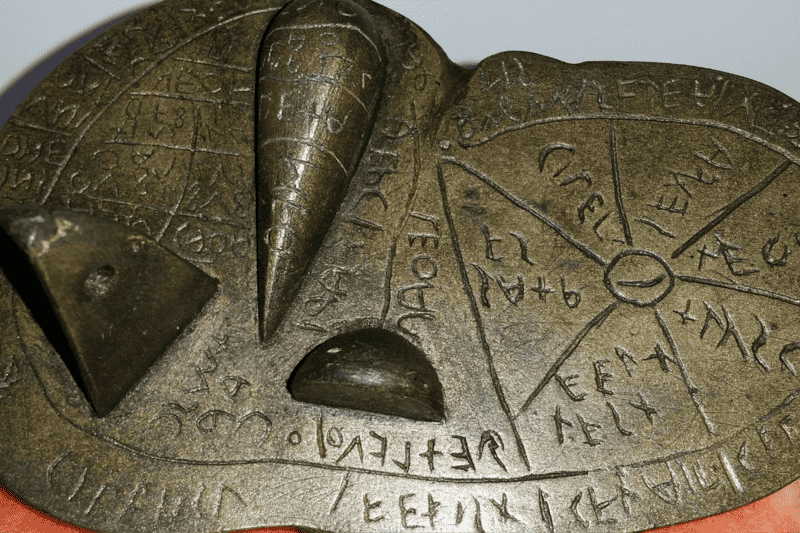
Etruscan Astronomy
The Etruscans are a mysterious civilization predating Rome in Italy. They remain cosmic artisans, drawing inspiration from the abundant legacies of Greece and Rome. Although their astronomical pursuits may not be as extensively documented as their contemporaries, the Etruscans left behind tantalizing artifacts that hint at a nuanced cosmic awareness. Pioneers in the art of borrowing and adapting, the Etruscans wove their unique society by blending influences from the Greeks and Romans, crafting a cultural mosaic that included elements of both.
While concrete details about Etruscan astronomical observations remain elusive, their artifacts, adorned with heavenly motifs, suggest an inherent connection to the heavens. The Etruscans, like many ancient cultures, likely used astronomy as a practical tool, perhaps for agricultural and navigational purposes. The echoes of their inclinations resonate through time, imprinted in intricate jewelry and pottery adorned with depictions of stars, constellations, and astrological bodies. The motifs on their artifacts imply a reverence for the night sky and a recognition of the cyclical patterns that governed their lives. Although the Etruscans may not have left behind treatises detailing their astronomical theories, their artistic expressions subtly convey an intimate knowledge.
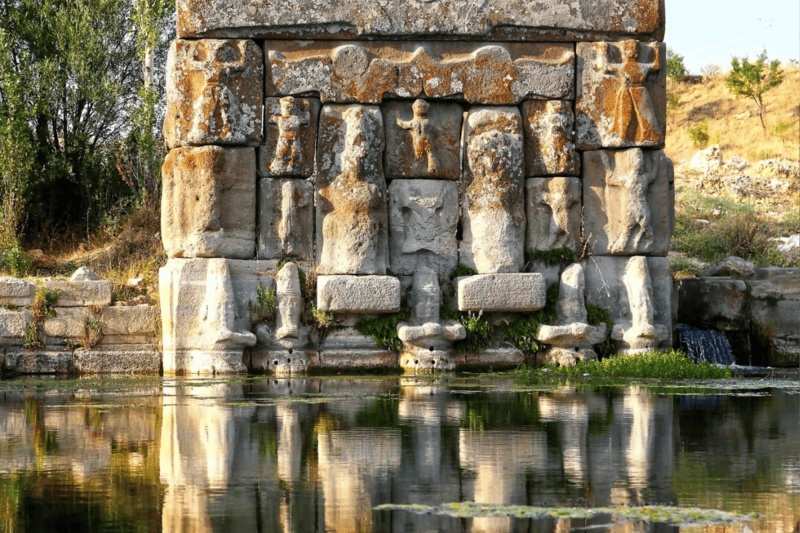
Hittite Astronomy
The Hittites hail from the Anatolian region, emerge as an intriguing chapter in the story of astronomy. Flourishing around the same period as the renowned Babylonians, the Hittites’ contributions to the cosmic narrative are shrouded in mystery, with only fragmentary evidence revealing their astrological pursuits. Though direct proof of sophisticated Hittite astronomical practices remains elusive, tantalizing inscriptions hint at a nuanced understanding of the heavens. These inscriptions suggest an awareness of planetary events that unfolded in the skies above ancient Anatolia.
While the specifics of Hittite astronomical knowledge are not fully deciphered, their civilization likely relied on celestial cues for practical and symbolic purposes. Nomadic in nature, the Hittites traversed the Anatolian landscape, and it’s plausible that they looked to the stars for navigation, attuning their journeys with heavenly rhythm. Whether gazing skyward for navigational guidance or imbuing their culture with a cosmic reverence, the Hittites, albeit in a subtle manner, contributed to the broader tapestry of ancient astronomy.
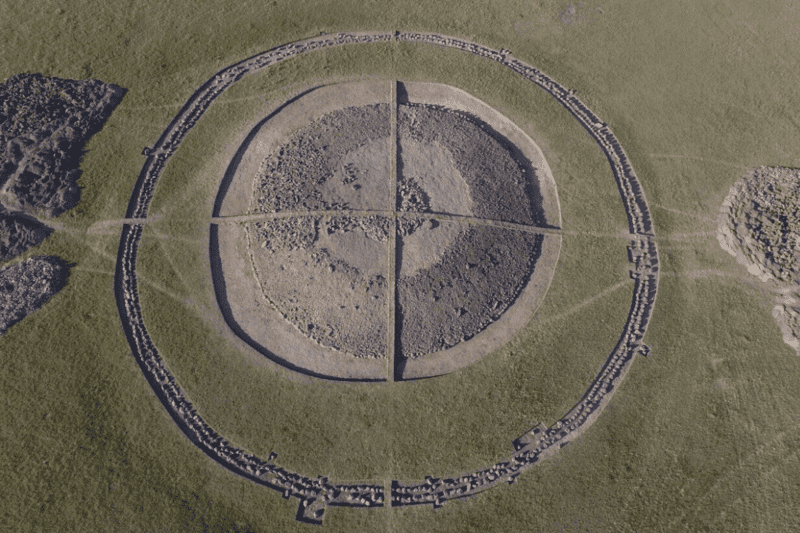
Scythian Astronomy
Within the Eurasian steppes, the Scythians, a nomadic people, left an impressive mark on the pages of ancient history. Although not celebrated for intricate astronomical observations, their unique way of life under the vast open skies of the steppes likely fostered a practical understanding of the cosmos. As nomads traversing the expansive landscapes, the Scythians depended on the night sky not merely for navigation but also for temporal guidance. The shimmering constellations above dictated the rhythms of their nomadic existence, serving as a cosmic clock that regulated their movements and activities.
While specific details about Scythian astronomical practices remain scarce, their reliance on the heavens for navigation suggests a fundamental grasp of cosmic cues. The vastness of the steppes necessitated a deep connection to the stars, aiding them in orienting themselves across the boundless landscapes. The Scythians, in their rudimentary astronomical knowledge, seamlessly integrated the celestial ballet into their daily lives, using the night sky not just as a compass but as a timekeeper. Their innate understanding of the stars and their practical application of astronomical principles, even in the absence of sophisticated instruments, highlights the profound impact that a astrological perspective had on the nomadic Scythian culture.
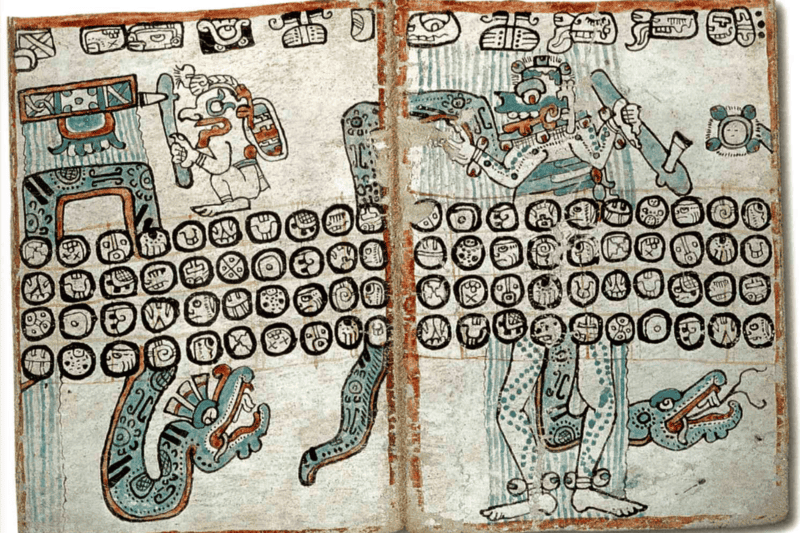
Olmecs of Mesoamerica
Journeying back to the cradle of Mesoamerican civilizations, we uncover the enigmatic Olmecs, pioneers who paved the way for astronomical curiosity in the region. Flourishing around 1400 BCE, the Olmec civilization, though veiled in mystery, played a vital role in shaping Mesoamerican astronomy. While direct evidence of their ponderings is scarce, the colossal stone heads and intriguing artifacts they left behind hint at a deep connection to the cosmos. Carved with precision and adorned with symbolic headdresses, these massive stone effigies potentially embodied heavenly deities or served as markers for cosmic events, showcasing the Olmecs’ keen awareness of the skies above.
The Olmecs’ influence echoed through time, laying the groundwork for the rich astronomical tapestry that later unfolded in Mesoamerica. Their legacy resonated in subsequent cultures, notably the Maya, who inherited and expanded upon the Olmec fascination with the heavens. It is believed that the Olmecs, much like their successors, incorporated astronomical knowledge into their daily lives, potentially using the night sky as cues for agricultural and religious practices. While the specifics of their astronomical achievements remain elusive, the Olmecs’ impact on Mesoamerican astronomy is undeniable, setting the stage for the intricate calendrical systems and planetary alignments that would characterize the region’s later civilizations.

Harappan People of the Indus Valley
Venture back in time to the flourishing Indus Valley, where the ancient Harappan civilization, from 3300 to 1300 BCE, left an indelible mark on the landscape with their advanced urban planning and engineering prowess. Although direct evidence of their astronomical insights is somewhat elusive, the remnants of their civilization provide intriguing hints. Archaeological sites from this enigmatic era suggest a fascinating connection between the Harappans and the heavenly realm. The layout of certain structures hints at alignments with cosmic events, showcasing an ancient fascination with the heavens.
In the heart of the Indus Valley, the Harappans, while not explicitly documented for their astronomical pursuits, appear to have incorporated astronomy into their architectural endeavors. This suggests an intuitive understanding of the cosmos and an innate connection between their constructed environment and the night sky above. While the specifics of their astronomical knowledge remain shrouded in mystery, the very notion of aligning structures with astrological occurrences shows a deep cultural integration of the cosmic realm into the fabric of Harappan life. As we gaze upon the remnants of their cities, we catch glimpses of a people who engaged with the cosmos in their own quiet way, perhaps using those cues for calendrical or religious purposes. The Harappan Civilization, with its whispers echoing through time, invites us to contemplate the connection between ancient urban planning and the cosmic ballet that shaped their worldview.
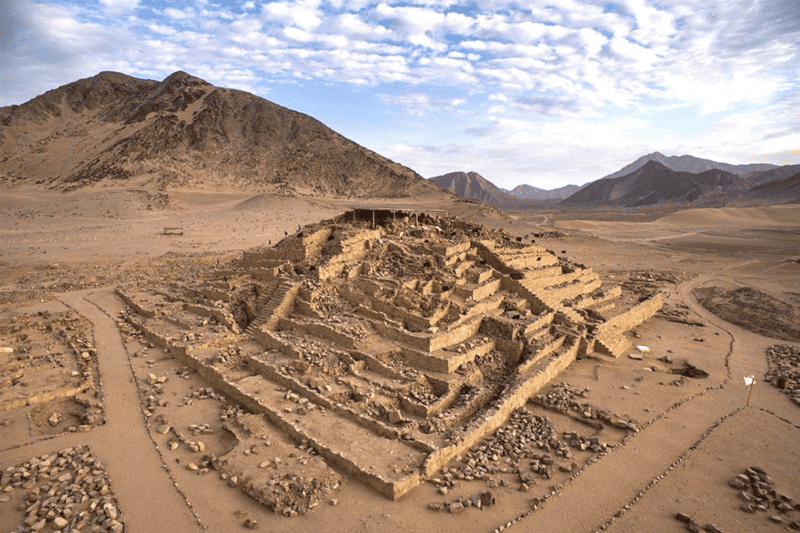
Caral-Supe People of Peru
In the heart of ancient Peru, the Caral-Supe civilization, a trailblazer among the oldest civilizations in the Americas, beckons us to uncover the mysteries of their cosmic connection. Flourishing around 2600 BCE, the enigmatic city of Caral stands as a testament to their sophisticated urban planning. Though the details of their specific astronomical observations remain shrouded in the mists of time, the city’s architectural layout hints at a profound awareness of astrological alignments. Imagine strolling through the ancient streets of Caral, where monumental structures, carefully positioned in relation to the heavens, silently echo a fascination with the cosmos. While the Caral-Supe people may not have left behind explicit records of their heavenly musings, the very fabric of their city whispers tales of a civilization attuned to the rhythms that governed their world.
The Caral-Supe’s utilization of astronomy is a captivating puzzle that invites speculation. Perhaps their architectural precision served practical purposes, aligning with astronomical markers for agricultural or religious significance. It’s plausible that these events played a role in their calendar systems, guiding agricultural practices crucial to their survival. Although the specifics elude us, the Caral-Supe’s nod to the skies showcases a profound connection between their earthly endeavors and the cosmic ballet above. In the grand tapestry of ancient civilizations, Caral-Supe’s influence on astronomy lies not in detailed star charts but in the harmonious dance between their cityscape and the celestial wonders. Their impact on astronomy resonates through time, reminding us that even in the absence of written records, the whispers of the stars find expression in the very stones upon which ancient civilizations built their dreams.
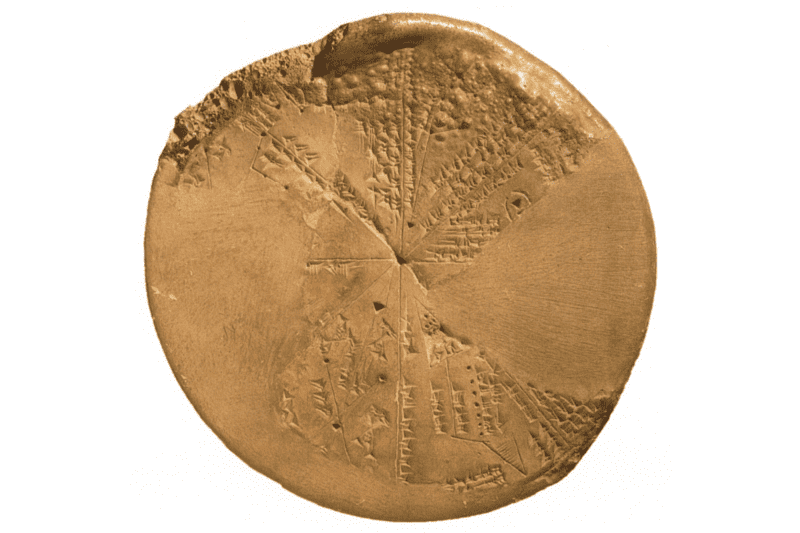
The Assyrian Astronomers
Hidden deep in the cradle of Mesopotamia, the Assyrians emerge as heavenly custodians, building upon the rich astronomical legacy left by their predecessors—the Sumerians and Babylonians. In their pursuit of cosmic understanding, the Assyrians meticulously observed and documented celestial events, contributing significantly to the vibrant tapestry of ancient astronomy. Carrying forward the tradition of their Mesopotamian forebears, Assyrian astronomers refined the art of astronomical record-keeping, leaving an impact on astronomical history.
For the Assyrians, astronomy was not a mere scientific endeavor but a tool with practical and symbolic significance. Their keen observations of the night sky aurorae served dual roles, acting as a cosmic timekeeper. The meticulous records they maintained played a pivotal role in crafting calendars, predicting lunar and solar events, and determining auspicious moments for agricultural and religious activities. As stewards of the heavens, the Assyrians shaped a holistic approach to astronomy, seamlessly blending the pragmatic with the mystical. Their contributions extended beyond the confines of their empire, influencing the broader Mesopotamian worldview and laying the foundation for subsequent cultures to unravel the secrets of the cosmos.
Where Do We Find This Stuff? Here Are Our Sources:
The Sumerians and Babylonians of Mesopotamia:
Egyptians of Mesopotamia:
Ancient Greek Astronomy:
Mayan Astronomy:
Ancient Chinese Astronomy:
Medieval Islamic Astronomy:
The Hopi and Navajo Tribes of North America:
Inca People of South America:
Ancient Indian Astronomy:
Polynesian Astronomy:
Aztec Astronomy:
The Dogon People of Mali:
Ancient Japanese Astronomy:
Aboriginal People of Australia:
Phoenician Astronomy:
Etruscan Astronomy:
Hittite Astronomy:
Scythian Astronomy:
Olmecs of Mesoamerica:
Harappan People of the Indus Valley:
Caral-Supe People of Peru:
The Assyrian Astronomers:

